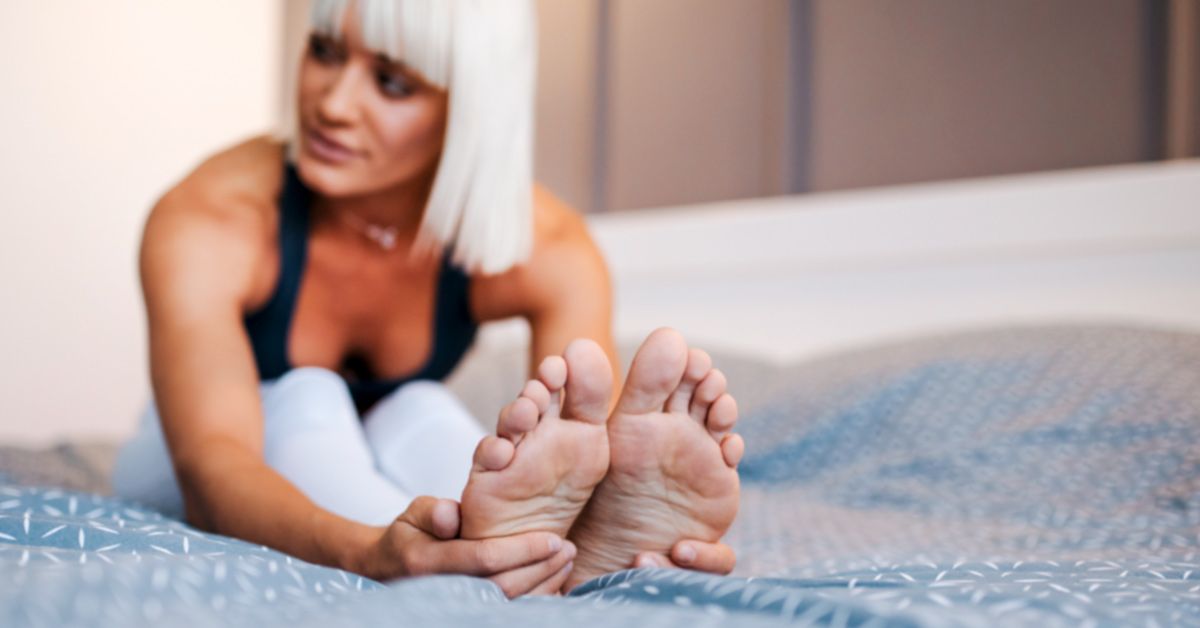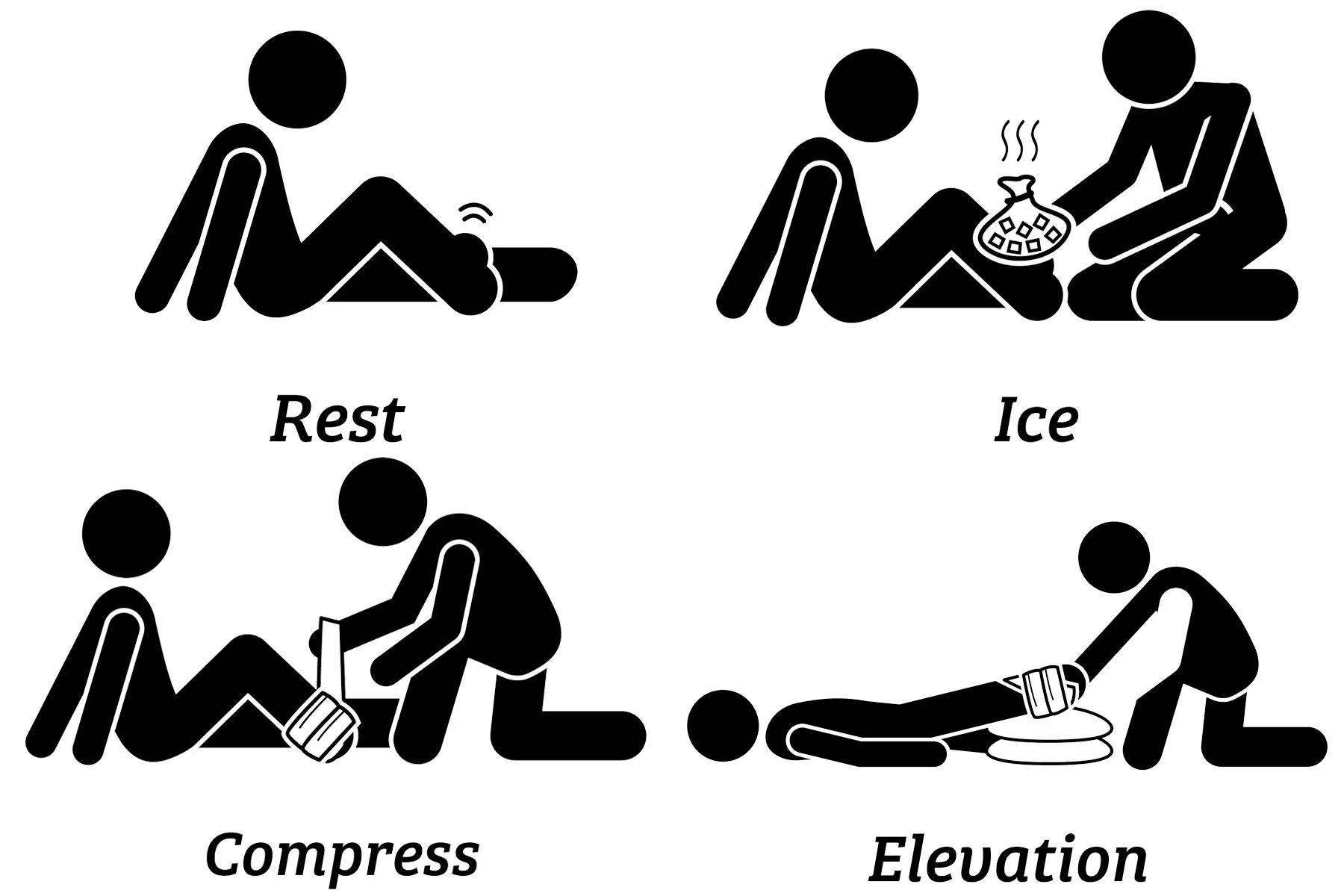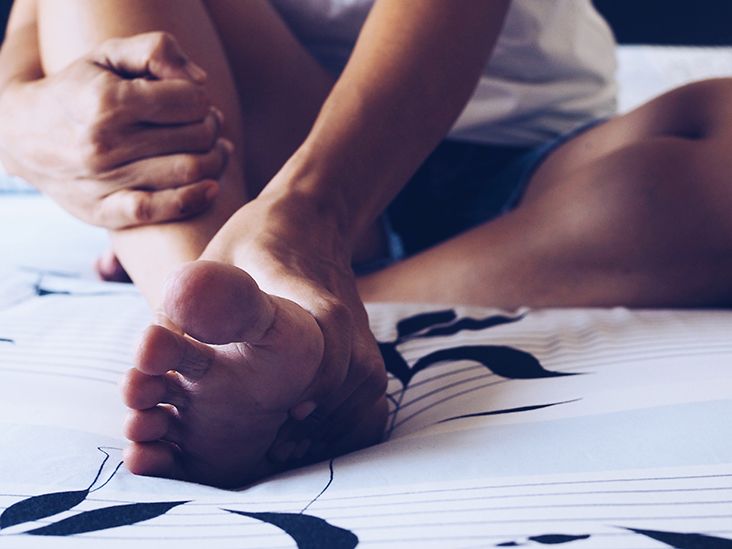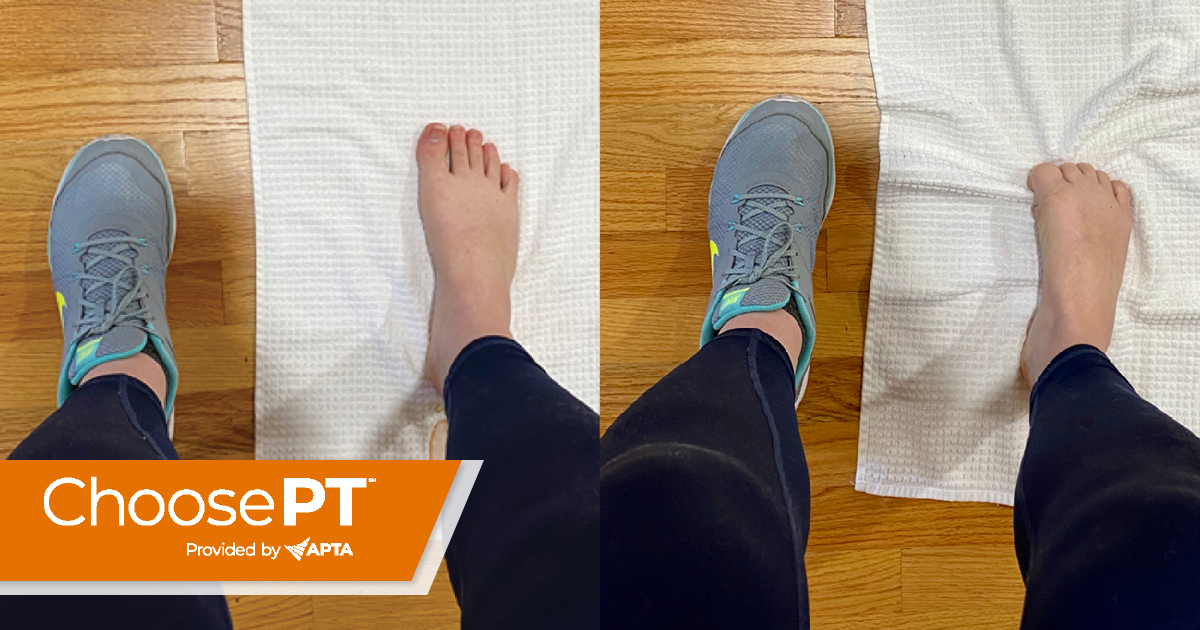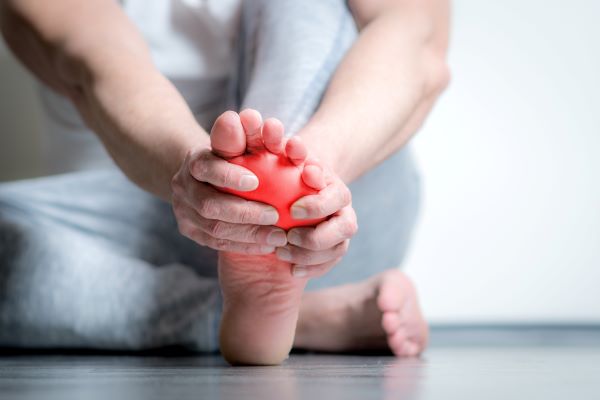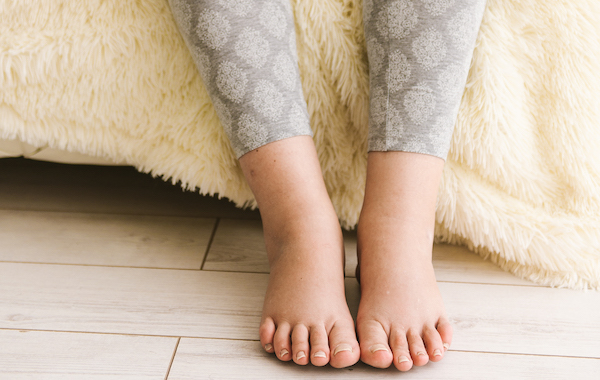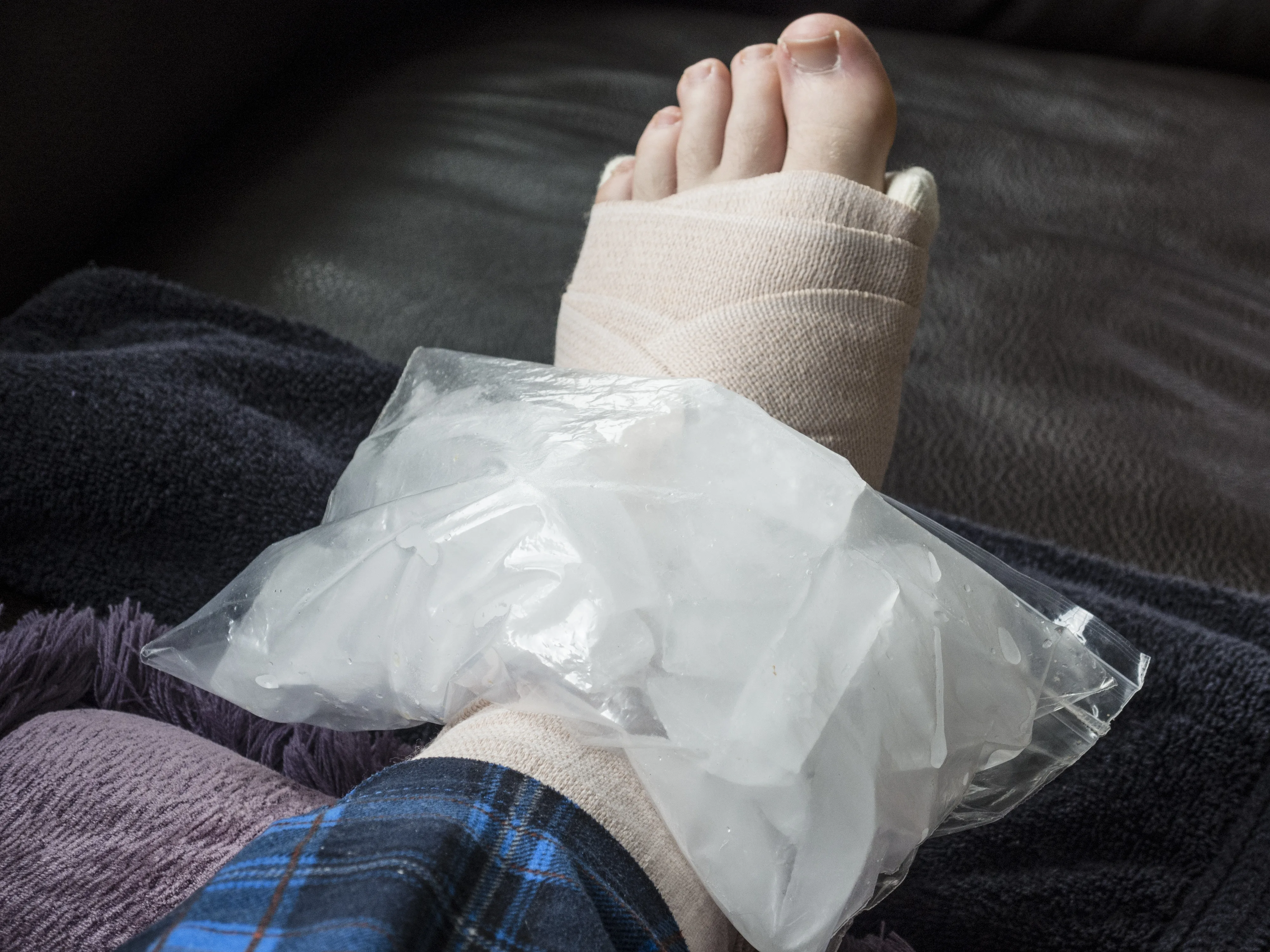Foot pain is a common issue that can affect anyone—from avid athletes and busy professionals to those simply navigating the demands of everyday life. Whether the discomfort stems from long hours on your feet, an unexpected injury, or chronic conditions such as plantar fasciitis or arthritis, finding relief is essential for maintaining mobility and enjoying a pain‐free life. This comprehensive guide shares practical tips and exercises to help ease foot pain, drawing on expert advice from trusted sources like Healthline, Cleveland Clinic, NHS, and many more.
In this article, the various causes of foot pain will be explored, followed by a range of at-home remedies and long-term strategies. With an emphasis on clear explanations and actionable advice, this guide will help you understand why your feet ache and what you can do to find relief.
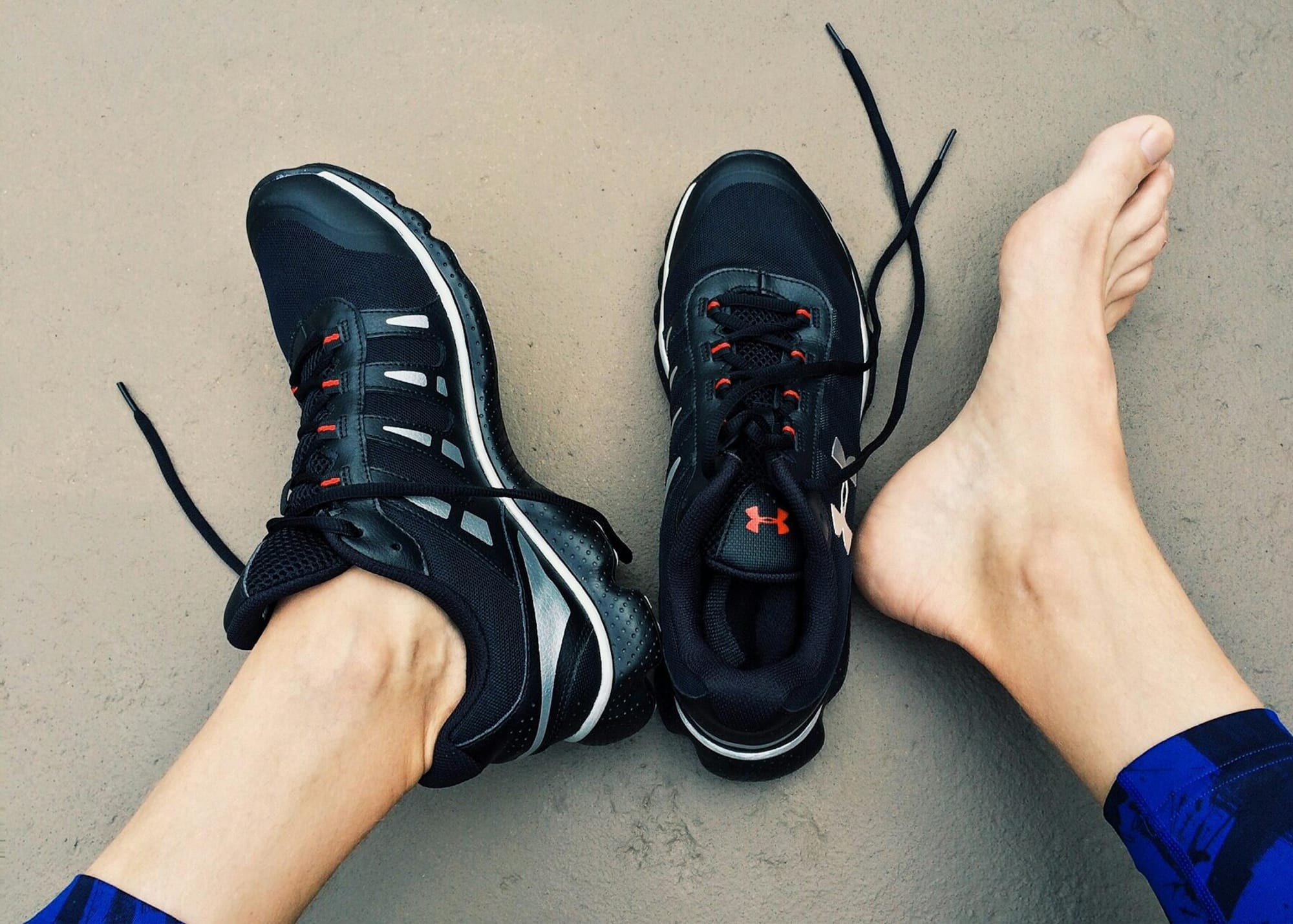
Before exploring remedies, it’s important to understand what may be causing your foot pain. Foot discomfort can result from multiple factors, including:
- Overuse and Fatigue: Extended periods of standing, walking, or running can place significant strain on your feet. The repetitive pressure can lead to inflammation, muscle fatigue, and soreness.
- Injuries and Sprains: An acute injury, such as a sprained ankle or a fracture, often results in localized pain and swelling. Even minor injuries can cause persistent discomfort if not properly treated.
- Structural Issues: Problems such as flat feet, high arches, or misaligned joints can alter your gait and put additional pressure on certain areas, resulting in chronic pain. Sources like Medical News explain how these issues may lead to long-term discomfort if left unaddressed.
- Chronic Conditions: Conditions like plantar fasciitis, Achilles tendonitis, and arthritis frequently cause foot pain. For example, plantar fasciitis, which affects the band of tissue connecting your heel to your toes, is a common culprit behind heel and arch pain. WebMD provides a detailed overview of these conditions and their typical symptoms.
Understanding the source of your pain is a critical step in choosing the right treatment strategy. In many cases, a combination of self-care and professional guidance may be necessary to effectively manage your symptoms.
Immediate At-Home Remedies
For many, the first line of defense against foot pain involves simple, at-home remedies designed to reduce inflammation and alleviate discomfort. Here are some practical approaches that have proven effective:
1. Ice Therapy
Applying ice to the affected area can help reduce inflammation and numb the pain. It’s important to follow a few key steps to use ice safely:
- Use a Barrier: Never apply ice directly to the skin. Wrap the ice pack or a bag of frozen peas in a thin towel to protect your skin from frostbite.
- Timing Is Key: Apply cold therapy in 15- to 20-minute intervals. Allow your skin to return to normal temperature between sessions.
- Target the Area: Focus on the specific spot where the pain is most intense. For example, if the pain is in your heel, place the ice pack there. This method is widely recommended by experts from Healthline and WebMD.
2. Warm Foot Soaks
If your feet feel sore but not inflamed, a warm foot soak can help relax the muscles and improve circulation. A popular method is to add Epsom salts to a basin of warm water. The salts work to ease muscle tension and may even reduce swelling. According to Medical News, soaking your feet for about 20 minutes can offer significant relief.
3. Elevation and Rest
Elevating your feet can help reduce swelling by encouraging fluid drainage. Try to rest and prop your feet up on a pillow or footstool whenever possible, especially after long periods of standing or walking.
4. Gentle Massage
Massaging your feet can improve circulation and ease tension in the muscles. Use a bit of lotion or oil and gently knead the arches, heels, and toes. This technique is beneficial not only for immediate relief but also for long-term foot health. For a more intensive session, consider using a foot roller, which can help target stubborn knots and areas of tightness.
Exercises and Stretches for Long-Term Relief
While immediate remedies can help manage acute pain, regular stretching and strengthening exercises are crucial for long-term relief. Here are some exercises designed to enhance flexibility, improve balance, and strengthen the muscles that support your feet:
1. Stretching the Feet
Regular stretching can help relieve tension and prevent future pain:
- Toe and Heel Stretch: Sit comfortably with your legs extended. Gently pull your toes toward you, feeling a stretch along the bottom of your foot. Repeat this several times for each foot.
- Calf Stretches: Stand facing a wall with one foot behind the other. Lean into the wall until you feel a stretch in the calf of your back leg. Hold the position for 20 seconds and repeat on each side. This exercise is especially helpful if tight calves are contributing to your foot pain, as noted by NHS.
2. Strengthening Exercises
Building strength in your feet can prevent injuries and reduce pain over time. Consider incorporating these exercises into your routine:
- Towel Scrunches: Sit with a towel spread out on the floor. Use your toes to scrunch up the towel, then release. This exercise targets the muscles in the arches and can improve overall foot stability.
- Resistance Band Workouts: Secure a resistance band around your foot and gently pull it toward you, then slowly release. This not only strengthens your foot muscles but also improves flexibility. ChoosePT offers a series of similar exercises, particularly for those suffering from plantar fasciitis.
- Short Foot Exercise: Focus on drawing the ball of your foot toward your heel without curling your toes. This exercise strengthens the intrinsic muscles of the foot, which play a key role in supporting the arch.
3. Massage and Mobility Drills
In addition to stretching, regular foot massages and mobility drills can help prevent stiffness and maintain proper foot function. A simple technique is to roll your foot over a small ball or a frozen water bottle, focusing on areas that feel tight. This not only soothes pain but also enhances blood flow to the affected region.
Choosing the Right Footwear and Orthotics
One of the most significant contributors to foot pain can be ill-fitting footwear. Over time, shoes that do not provide adequate support or cushioning can lead to a host of problems—from arch pain to aggravated conditions like plantar fasciitis. Here are some key points to consider when selecting footwear:
1. Proper Fit
Your shoes should have a spacious toe box with at least half an inch of extra room beyond your longest toe. This extra space allows your toes to splay naturally, reducing the risk of compression and related pain. Optum emphasizes the importance of matching your footwear to your foot’s unique shape.
2. Arch Support
For individuals with flat feet or those experiencing arch pain, shoes with strong arch support are critical. Orthotic inserts or custom-made insoles can help redistribute pressure and provide the necessary support to alleviate pain. Experts recommend exploring options that offer both cushioning and stability.
3. Activity-Specific Shoes
Different activities require different types of shoes. For instance, running shoes are designed to absorb impact and provide dynamic support, while casual shoes might prioritize comfort and style. Choosing the right type of footwear for your activity can make a significant difference in managing foot pain.
When to Seek Professional Help?
While many foot pain issues can be managed at home, there are times when professional guidance is essential. Consider consulting a healthcare provider if:
- The pain is severe or persistent despite trying at-home remedies.
- You experience symptoms such as swelling, redness, or numbness.
- There is a possibility of an underlying condition, such as a stress fracture, nerve damage, or diabetic neuropathy.
- Over-the-counter treatments and exercises do not bring relief.
For example, individuals with diabetes should be especially cautious. Diabetic neuropathy can lead to serious complications if not managed properly, and professional care is crucial. Trinity Foot Center provides specialized treatments for patients dealing with nerve-related foot pain, ensuring a comprehensive approach to care.
Additional Tips for Special Conditions
Certain groups may face unique challenges when it comes to foot pain. Here are some tailored tips for specific conditions:
1. Arthritis and Joint Pain
Walking is an excellent low-impact exercise that helps maintain joint flexibility and overall health. For those with arthritis, incorporating gentle walks can strengthen the muscles around the joints and reduce pain. Versus Arthritis suggests starting slowly and gradually increasing the distance and duration of walks to build endurance without overstraining.
2. Diabetic Foot Pain
Diabetic neuropathy is a serious concern, as it can lead to numbness, tingling, and an increased risk of infections. Regularly inspecting your feet for cuts, blisters, or changes in color is vital. Additionally, wearing proper footwear that cushions and protects your feet can prevent complications. The advice from Trinity Foot Center underscores the importance of personalized treatments for diabetic patients.
3. Pregnancy-Related Foot Pain
Pregnancy brings about significant hormonal and structural changes, which can lead to swelling and altered foot structure. Extra weight and the hormone relaxin can cause the feet to widen, flatten, or even elongate, leading to discomfort. UT Southwestern offers insights into managing these changes, such as using compression socks, elevating the feet, and wearing supportive footwear to mitigate swelling and pain.
4. Flat Feet
Flat feet can result in an imbalance that causes strain on the muscles and ligaments. Exercises aimed at strengthening the arch, such as the short foot exercise, can be particularly beneficial. Bauerfeind details several exercises—including towel scrunches and barefoot walking—that help retrain the muscles supporting the arch and improve overall foot posture.
5. Sports Injuries
For those recovering from sports injuries, applying ice immediately after an injury is crucial to reduce inflammation and control pain. In the early stages of injury management, combining ice with rest, compression, and elevation (the P.R.I.C.E. method) is recommended. Sports Health provides valuable tips on how to safely use ice therapy without damaging the skin, ensuring that recovery is as smooth as possible.
Lifestyle Adjustments and Preventive Measures
In addition to addressing acute pain, adopting a few lifestyle habits can help prevent future discomfort and promote long-term foot health:
1. Maintain a Healthy Weight
Excess body weight can put additional stress on your feet, exacerbating pain and contributing to structural changes over time. By maintaining a healthy weight through a balanced diet and regular exercise, the pressure on your feet is reduced, and overall mobility is improved.
2. Practice Good Posture
Your overall posture has a direct impact on the alignment and function of your feet. Sitting and standing with proper alignment can help distribute your body weight evenly. MedlinePlus offers guidance on improving posture, emphasizing the importance of aligning the spine and maintaining a balanced stance to reduce undue stress on the feet.
3. Incorporate Mindfulness and Relaxation Techniques
Chronic pain can sometimes lead to stress and anxiety, which in turn can worsen physical discomfort. Techniques such as mindfulness meditation can help manage stress and promote relaxation. Mayo Clinic describes how mindfulness exercises allow for a more balanced state of mind, which can indirectly benefit physical pain management.
4. Regular Foot Care
Establishing a routine that includes daily foot inspections, proper hygiene, and gentle massages can go a long way in preventing foot problems. Paying attention to changes in the skin, nails, or structure of your feet can help catch potential issues early. This is especially important for individuals with underlying conditions such as diabetes.
5. Stay Active and Adjust Your Routine
Even if you’re managing foot pain, staying active is crucial. Low-impact activities like swimming, cycling, or yoga can help keep your body flexible and reduce stiffness. When engaging in physical activities, ensure that your footwear is appropriate for the activity and that you incorporate warm-up and cool-down stretches into your routine.
A Holistic Approach to Foot Pain Relief
Finding relief for foot pain often requires a multifaceted approach. Combining immediate self-care remedies with regular exercises, proper footwear, and professional guidance creates a comprehensive strategy for long-term comfort. Here’s a summary of the key points discussed:
- Immediate Relief: Use ice therapy, warm foot soaks, and gentle massage to manage acute pain and inflammation.
- Regular Exercises: Incorporate stretching and strengthening exercises into your daily routine to build resilience in your feet.
- Appropriate Footwear: Invest in well-fitting shoes with adequate arch support and consider custom orthotics if necessary.
- Lifestyle Adjustments: Maintain a healthy weight, practice good posture, and manage stress through mindfulness techniques.
- Special Conditions: Tailor your approach if you have arthritis, diabetes, are pregnant, or suffer from flat feet, as these conditions require extra care.
- Professional Help: Don’t hesitate to seek medical advice if your pain persists or if you notice worrying symptoms.
By integrating these strategies into daily life, it becomes possible to not only find relief from current discomfort but also to prevent future episodes of foot pain. Whether you’re treating a minor irritation after a long day at work or managing a chronic condition, the path to healthier, pain-free feet begins with informed, proactive care.
Final Thoughts
By integrating these practical tips and expert recommendations into your daily routine, relief from foot pain isn’t just a distant dream—it can become your new reality. Whether you’re dealing with the everyday aches from long workdays or managing a chronic condition, the key lies in being proactive about your foot health. With proper care, support, and attention, your feet can carry you confidently through every day.
Taking a holistic approach that combines self-care with professional support can truly make a difference. Remember, the first step to long-term relief is understanding your body’s signals, and then responding with care and attention. With the right mindset and tools, foot pain can be managed effectively, allowing you to focus on what truly matters—living a full, active, and comfortable life.
Sources:


